From Onboarding to Beyond in PLG (Product-Led Growth)

Product-led Growth (PLG) places great importance on onboarding.
Nothing begins unless the product is used and its value is recognized by the users.
A Recap on PLG
Sales-led Growth (SLG) revolves around sales-centric selling, whereas Product-led Growth (PLG) is centered around product-centric selling.
In the PLG model, it’s essential that anyone can register an account for free and easily interact with the product.
The basic flow of PLG is to quickly let users experience the value of the product, turn them into fans, and eventually convert them into paying customers.
About Onboarding in PLG
Generally, when we talk about onboarding, it’s often considered as the Activation step in the AARRR model.
- Acquisition
- Activation
- Retention
- Referral
- Revenue
However, in reality, PLG onboarding encompasses all the steps from Acquisition to Retention.

Onboarding Milestones in PLG
1. MVP (Moment of Value Perception)
The moment when users first imagine the product in the context of their own situation.
This is the responsibility of the marketing team.
2. MVR (Moment of Value Realization)
The moment when users first experience the value of the product and achieve the desired results with it.
Handled by the development team and sales team.
3. MVA (Moment of Value Adoption)
The moment when users start using the product regularly and incorporate it into their life or workflow.
This is the responsibility of the development team and sales team.
Lead Model in PLG
The handling of leads differs between PLG and SLG.
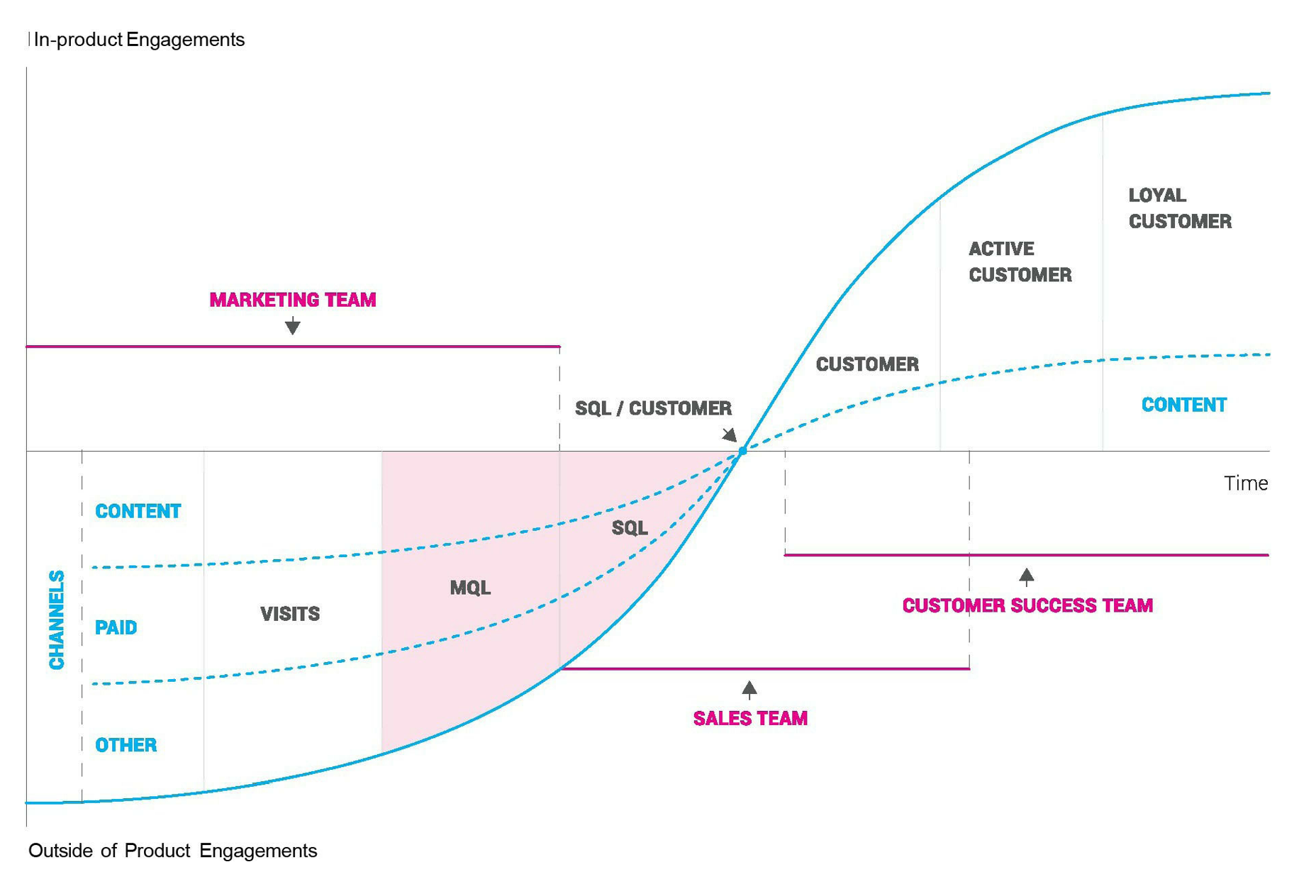
In the case of SLG (Sales-led Growth), the marketing team initially acquires email addresses and phone numbers through exhibitions, events, and advertisements. These leads are referred to as MQLs (Marketing Qualified Leads).
In contrast, the sales team contacts these leads through email or phone to initiate sales discussions. These leads are known as SQLs (Sales Qualified Leads).
The process then moves on to customer conversion through sales discussions and continues with customer success. This is what is typically known as THE MODEL.
In this flow, users actually interact with the product at the point of customer conversion.
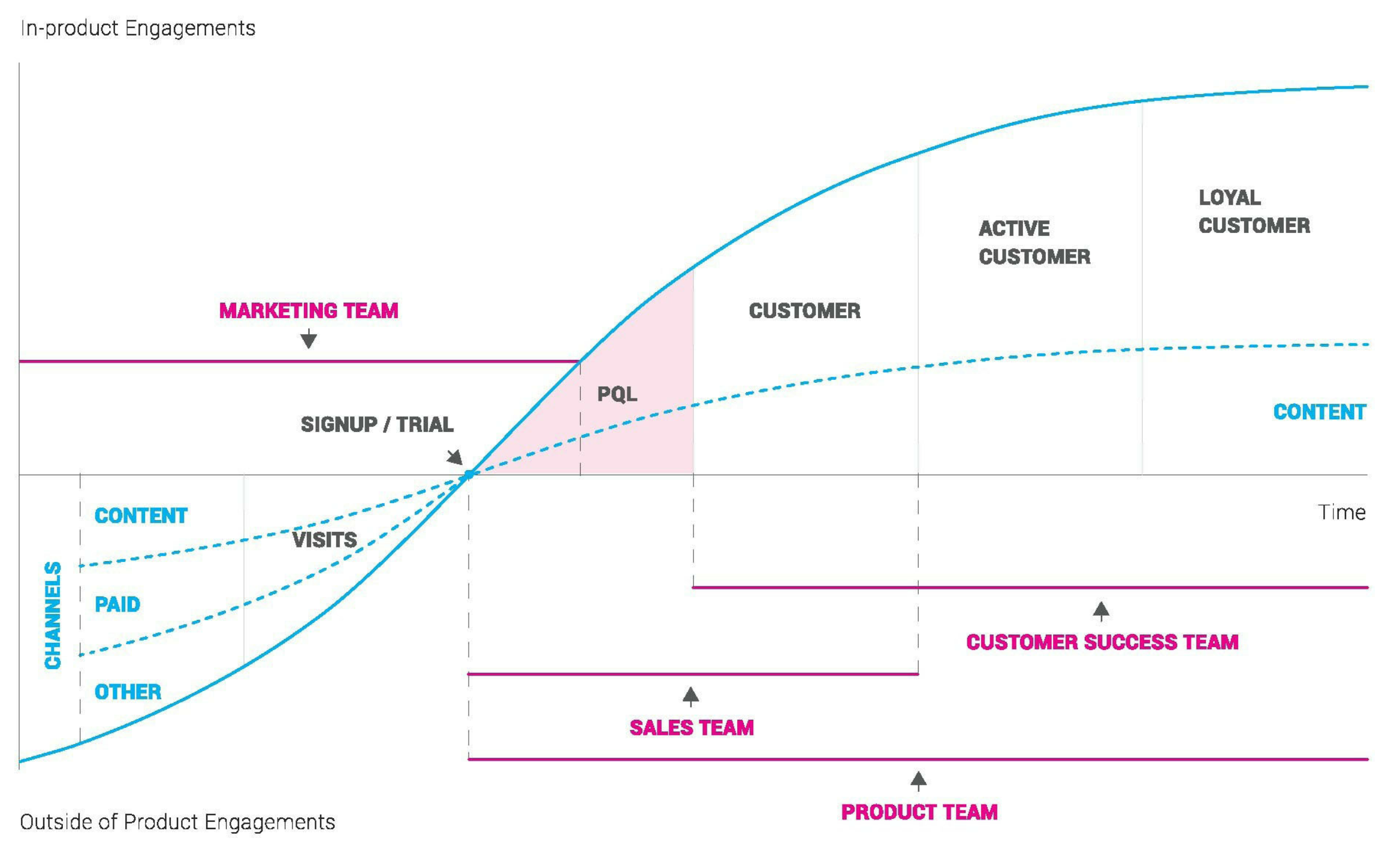
On the other hand, in the case of PLG (Product-led Growth), the marketing team encourages sign-ups through content, advertising, and events. At this stage, users start to interact with the product. This can be referred to as the MQL (Marketing Qualified Lead) in PLG.
Next, guidance is provided through both the product and communication until the user first feels the value of the product. These are also known as product bumpers and communication bumpers. (As a reference, the following article is provided)

- Going Forward with Product-Led Growth | Kazuki Shibata
- In recent times, Product-Led Growth (PLG) has rapidly become a hot topic in the startup world. Unlike the traditional sales-driven approach, PLG is centered around the product. A standard sales-driven approach is encapsulated by THE MODEL, where the marketing team generates leads, the inside sales team turns these into prospects, and the closing team finalizes the deals.
- https://www.mythinkings.net/en/product-led-growth
In PLG (Product-led Growth), the product team enhances user experience through feature improvements and new feature development. When users start feeling the value of the product and continue using it, such leads are termed PQLs (Product Qualified Leads). In contrast, converting users to paying customers involves enriching the features of the paid plans and introducing appropriate use cases. While development for the free plan is often prioritized due to its larger user base, developing for the paid plan is crucial in creating enough value to justify the payment.
Subsequently, the customer success team listens to customer requests and continues to improve satisfaction. Received requests are shared with the marketing, sales, and product teams to further drive the cycle.
PQL Metric: PAI
The challenge in PLG is the conversion from MQL to PQL, as what constitutes a PQL varies with the product. The PAI (Product Adoption Indicator) serves as a metric for this. PAI can be understood as a strong signal indicating that users are likely to continue using the product.
Example of Facebook
Users who add 7 friends within 10 days are more likely to continue using Facebook.
Example of Twitter
The rule of following 30 people became a driving force for retention and growth.
Example of Slack
Teams that send 2,000 messages are 93% more likely to continue using Slack.
These are often introduced as NSM (North Star Metric), so it’s reasonable to equate PAI with NSM.
Finding the PAI
1. Calculate the Retention Curve
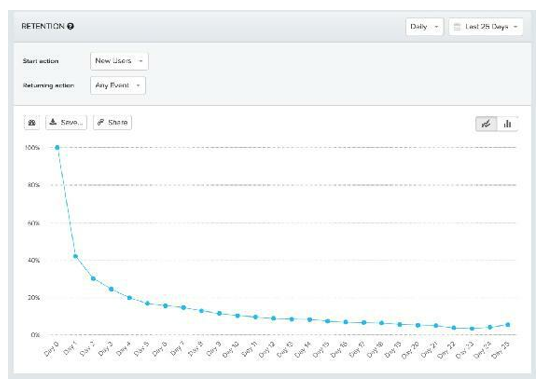
2. Look at the Retention Curve and Find the Point Where It Starts to Flatten
- In the example above, it stabilizes after the 21st day.
3. Look for Key Values in the Real Data that Maintain Retention
- Number of times a user revisits the product
- Number of features a user tries
- Use of a particular feature
- etc.
4. Compare Retention Curves for Segments Based on Hypotheses
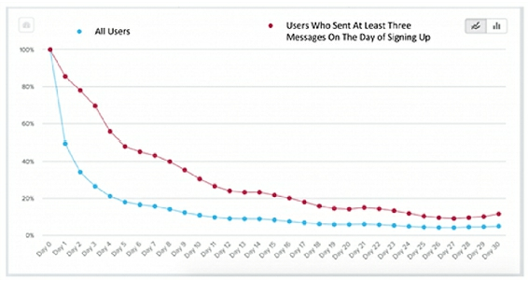
5. Find a Suitable Threshold
- For example, whether sending 100 or 1,000 messages is better. Obviously, retention is higher with 1,000 messages.
- Adjusting the achievable line based on the number of team members is also good.
Summary
In PLG, since users interact with the product earlier, the actions of each team change significantly. Above all, constantly enhancing the product's value is crucial (as it's product-led). Determining the PAI is challenging in itself.
PLG has real data on users interacting with the product, so it's essential to formulate various hypotheses based on this data and continually test and verify them.

- Product-Led Onboarding: How to Turn New Users Into Lifelong Customers
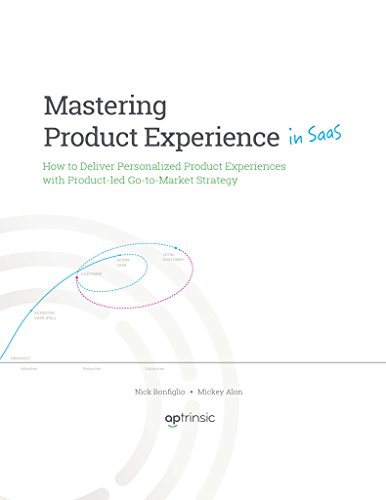
- Mastering Product Experience (in SaaS): How to Deliver Personalized Product Experiences with a Product-led Strategy














